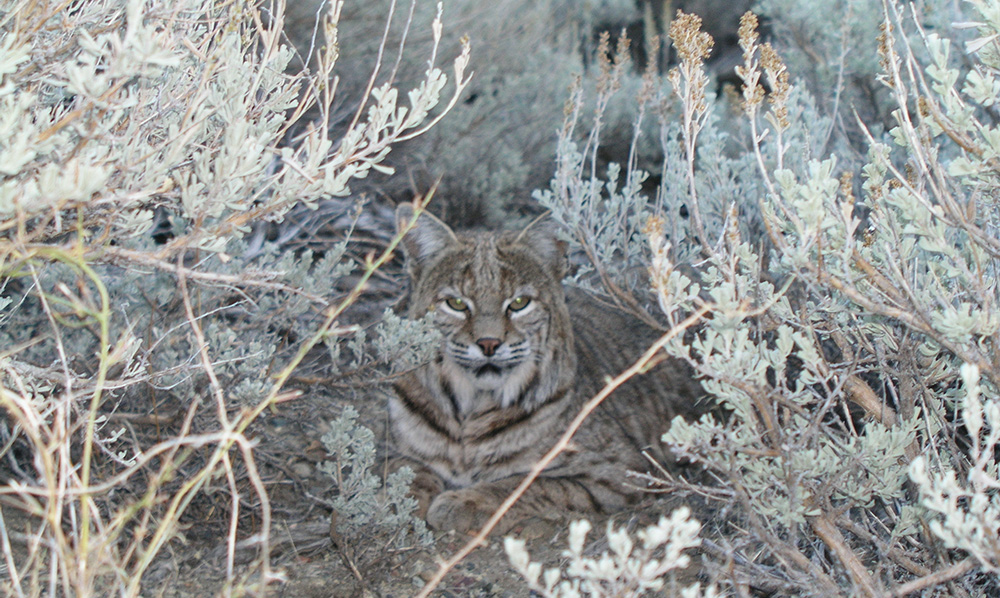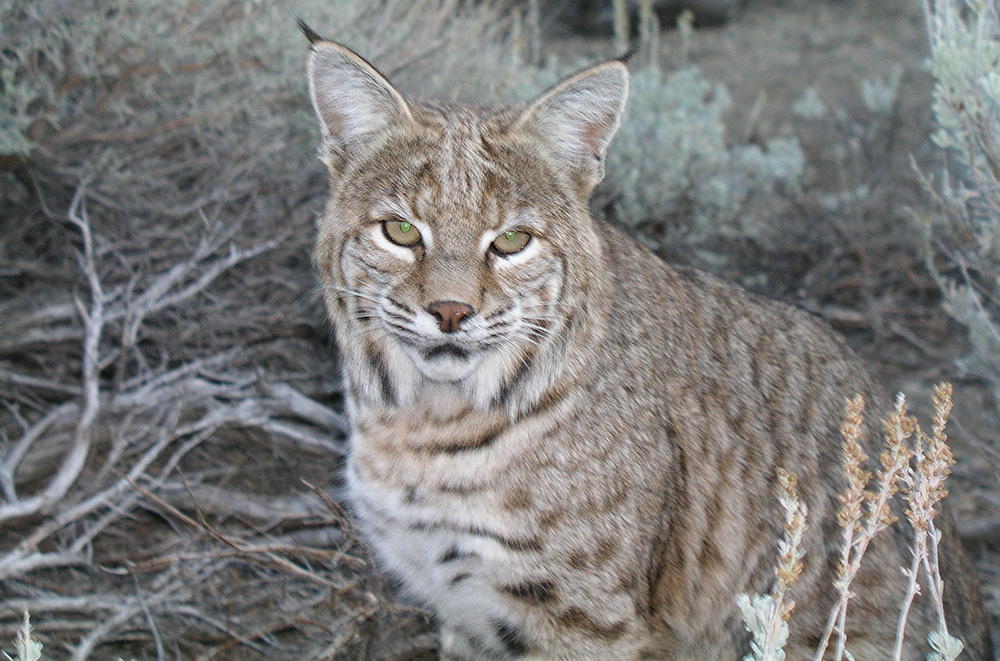
This post was written by Lisa Cutting, 2002-2020 Eastern Sierra Policy Director, 2000-2001 Environmental Resource Coordinator, and 1999 Mono Lake Intern.
On Wednesday afternoon, August 5, the California Department of Fish & Wildlife Commission voted 3–2 to end the trapping of bobcats throughout the entire state. This vote ends an archaic—and some would argue inhumane—practice of live-trapping bobcats in order to export pelts to China and Russia for high-end fashion demand.
Over two years ago, the Bobcat Protection Act of 2013 directed the Commission to consider two alternatives to protect bobcats: Option 1 would designate “no-trapping zones,” primarily around protected natural areas; and Option 2, which would make it unlawful to trap bobcats anywhere in California. After just as many years of staff reports, public meetings, and passionate and emotional discussions, the Commission followed the overwhelming majority of public sentiment and voted to ban trapping altogether.
During this process, the Mono Lake Committee submitted two letters and attended the June Commission meeting in Mammoth Lakes, advocating for the protection of bobcats in the Mono Basin—specifically within the Mono Basin National Forest Scenic Area and the Mono Lake Tufa State Natural Reserve, which, strangely wasn’t included in the list of State Park-protected no-trapping zones. However, no-trapping zones are now moot since all of California is excluded from trapping as a result of today’s vote—a result the Committee supports.
Protecting and restoring the Mono Basin means, as Aldo Leopold said, “keeping all the parts.” Myriad current scientific studies point to the importance of the role of top-level predators, like bobcats, to balanced ecosystems and their absence often has disruptive consequences.
Leopold also said, “A thing is right when it tends to preserve the integrity, stability, and beauty of the biotic community. It is wrong when it tends otherwise.” Today the right decision was made.



Thank you to the Mono Lake Committee for taking a strong position on this issue. Long live the bobcats of California!
Thank You!!!!!!
A great example that Public Response and Comment can still make a difference. The Fish and Game Commission received thousands of letters and emails and many Mono County residences made their voice count in this decision. Something to keep in mind in the efforts to keep Mono County such a great place to live and work on issues going forward.
This is wonderful news and a great article. I would like to use the article in an Environmental Science class in high school but am unable to make a copy or email to myself. Is there a way I can make a copy to reproduce for the classroom only?
This is good news and promising for the Bobcat population, but what is the enforcement plan to stop and prosecute poachers?
Great article, great news! Thank you to all that made this possible.
Your efforts are certainly instrumental in helping to protect the bobcats.
Thank you.
The Fish and Game Commission did this with no study to see if it was needed. The Humane Society was really behind it as they want all hunting banned in California. Last year the State set a quota of 14,400 Bobcats that could be trapped, only 1,200 were taken. Today there are more bobcats in California than in recent history. I have witnessed bobcats catching and eating fawns and we see what has happened to our deer herds and Bighorn Sheep herds since Mountain Lion Hunting was banned.